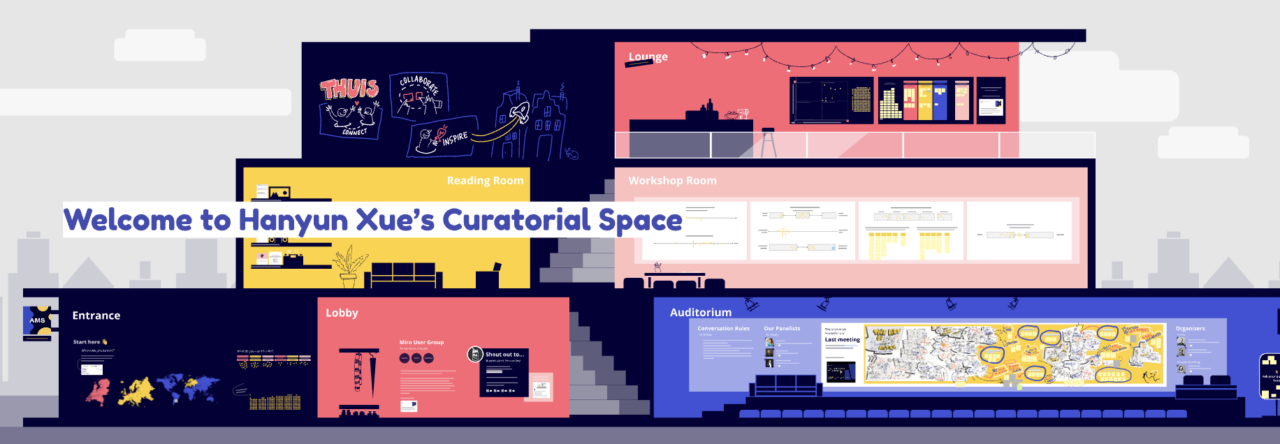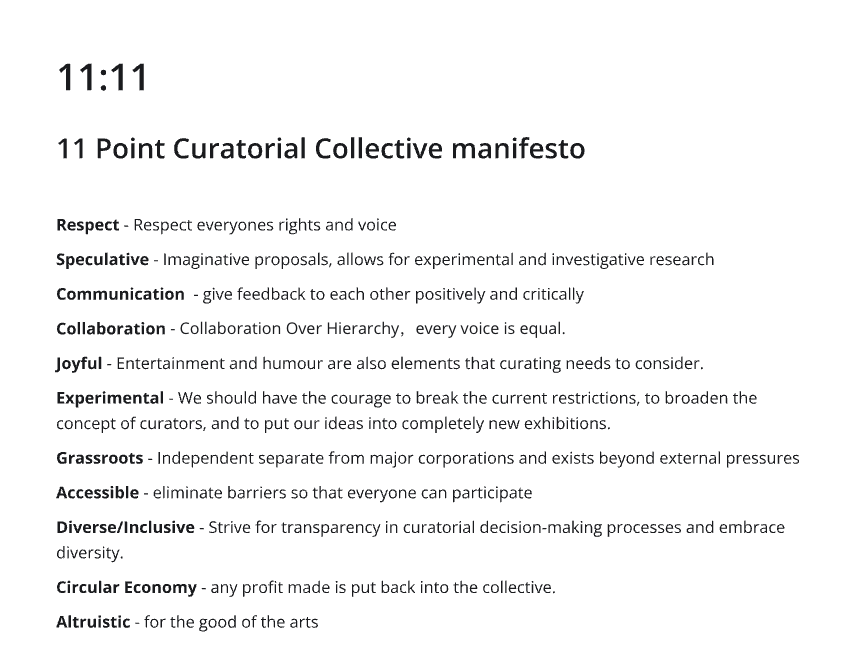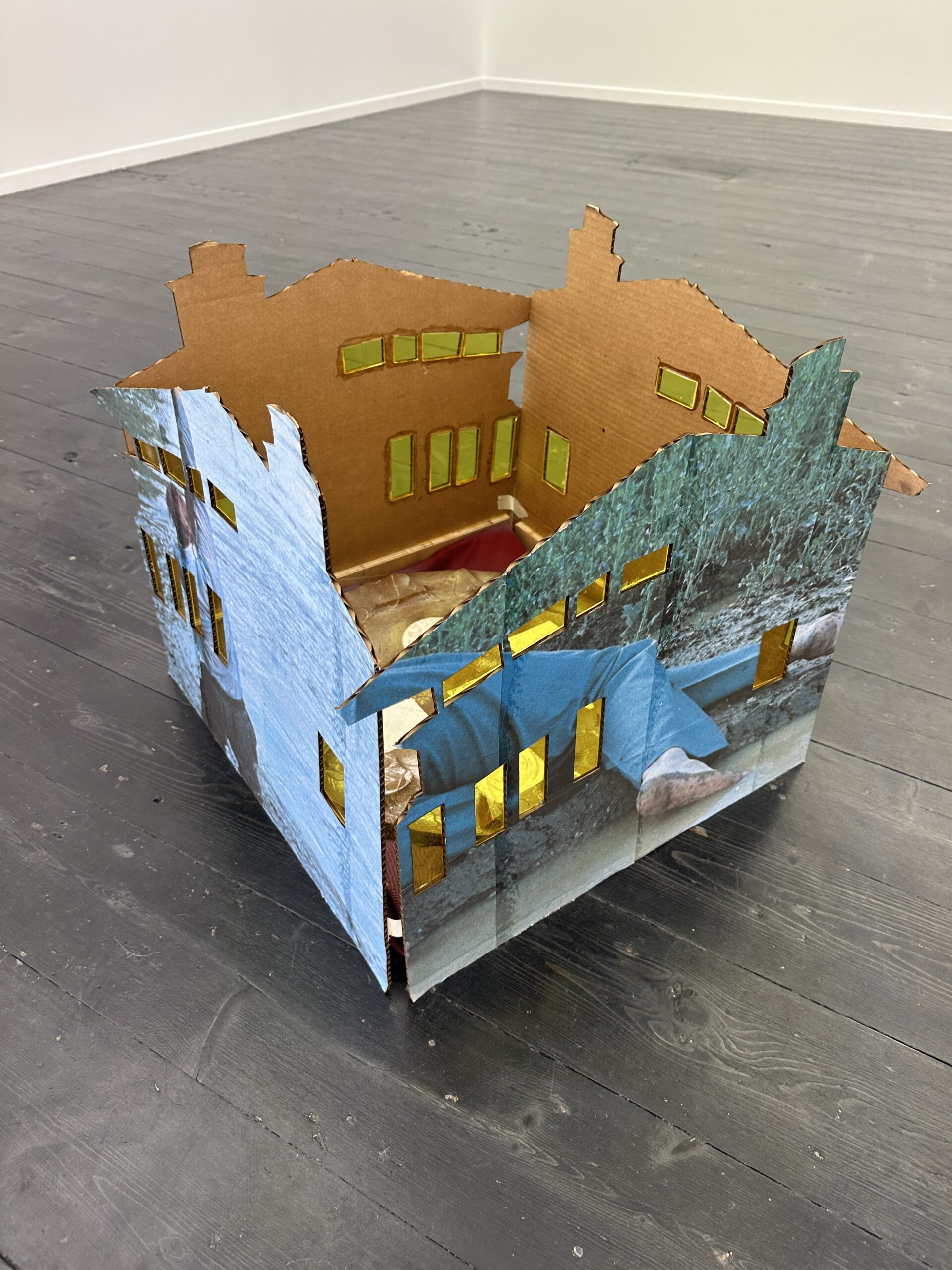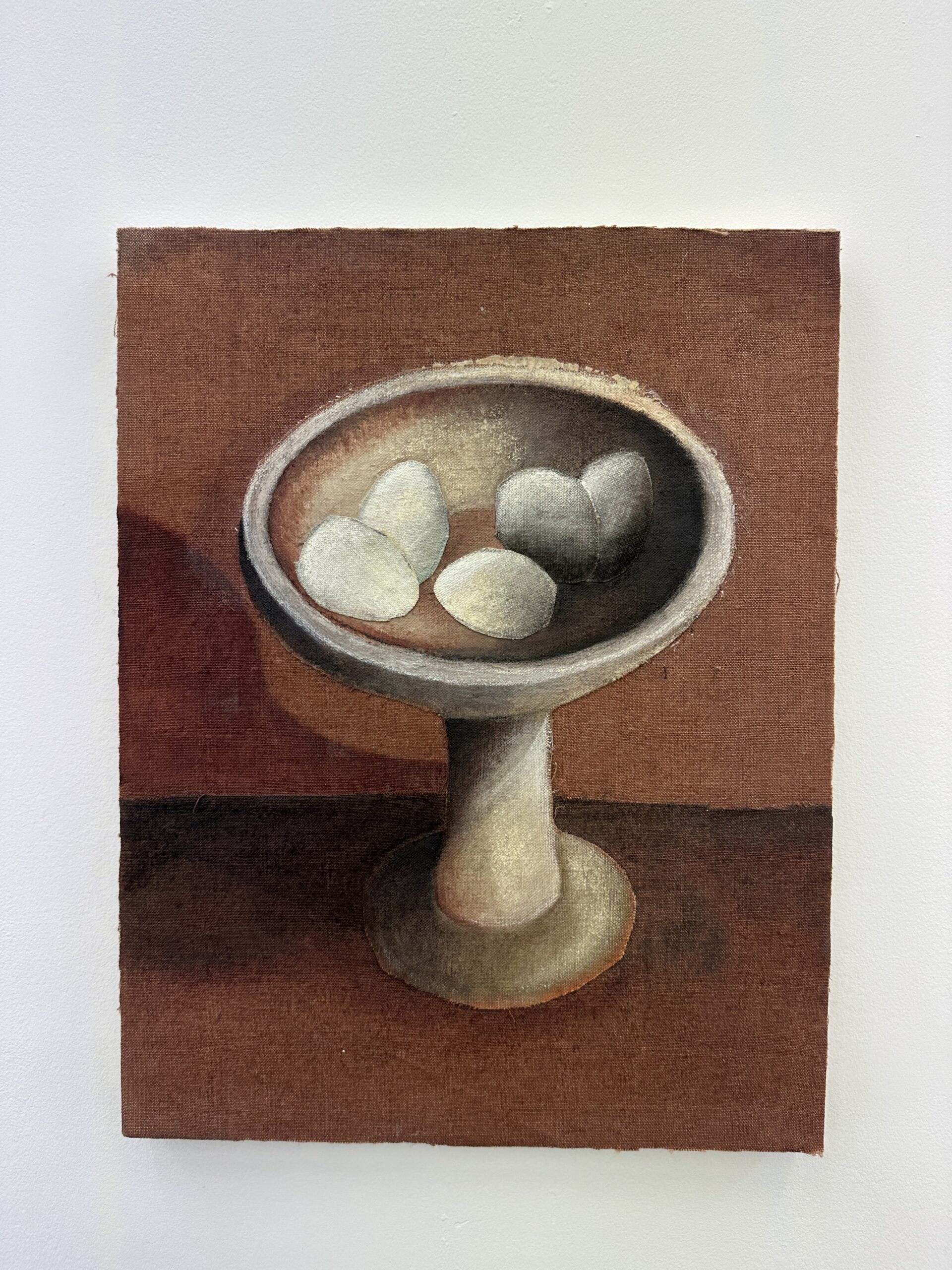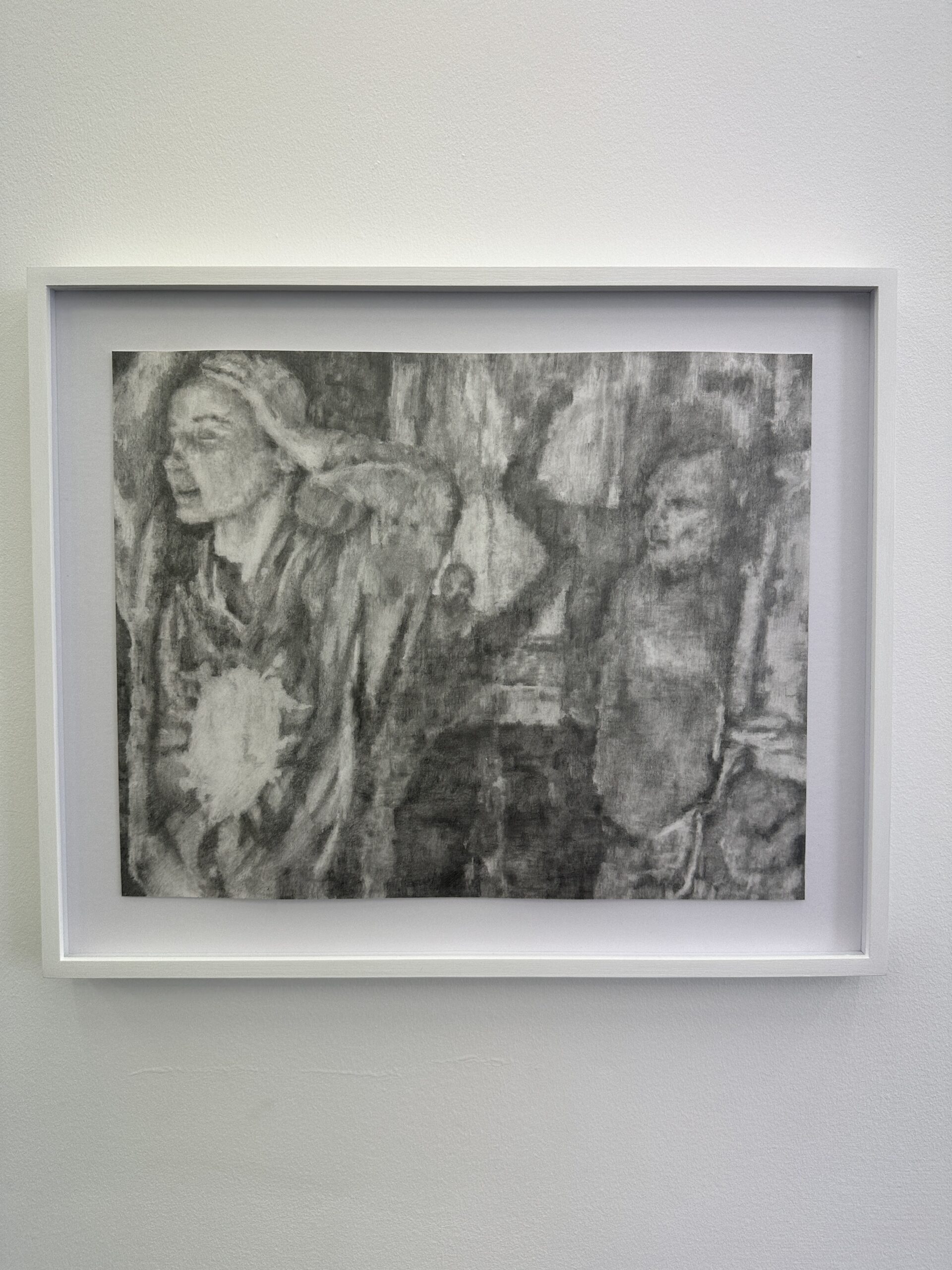 This week, I visited CORPSE FLOWER, an exhibition curated by MA Contemporary Art Practice students at Inverleith House, Royal Botanic Gardens Edinburgh. The show examined the delicate balance between fragility and resilience in plant ecosystems, mirroring the fleeting bloom of the Titan Arum (the “Corpse Flower”)—which flowers for just a day before decaying. 🌺💫
This week, I visited CORPSE FLOWER, an exhibition curated by MA Contemporary Art Practice students at Inverleith House, Royal Botanic Gardens Edinburgh. The show examined the delicate balance between fragility and resilience in plant ecosystems, mirroring the fleeting bloom of the Titan Arum (the “Corpse Flower”)—which flowers for just a day before decaying. 🌺💫
This exhibition deeply resonated with me, not just for its ecological themes but for the way it embraced temporality, audience engagement, and archival thinking—all of which directly relate to my Fluid Curating project. This blog will reflect on key aspects of the exhibition and how they inform my curatorial framework.
🌱 Experiencing CORPSE FLOWER: A Meditation on Impermanence
As I walked through the exhibition, I was struck by how each work invited contemplation of the life cycles of nature, the passage of time, and the act of preservation. The curators used the spatial setting of the Royal Botanic Gardens effectively, situating art within an environment where organic life itself is in a constant state of change.
Curatorial Highlights That Stood Out:
Interactive Art & Audience Participation: Touch-Responsive Installation
One installation featured a digital projection of Mimosa Pudica (sensitive plants) that reacted to touch, folding its leaves when engaged.
The instructions guided visitors to interact carefully, mimicking the natural responses of living plants.
This created a haptic, embodied experience that was both scientific and poetic.
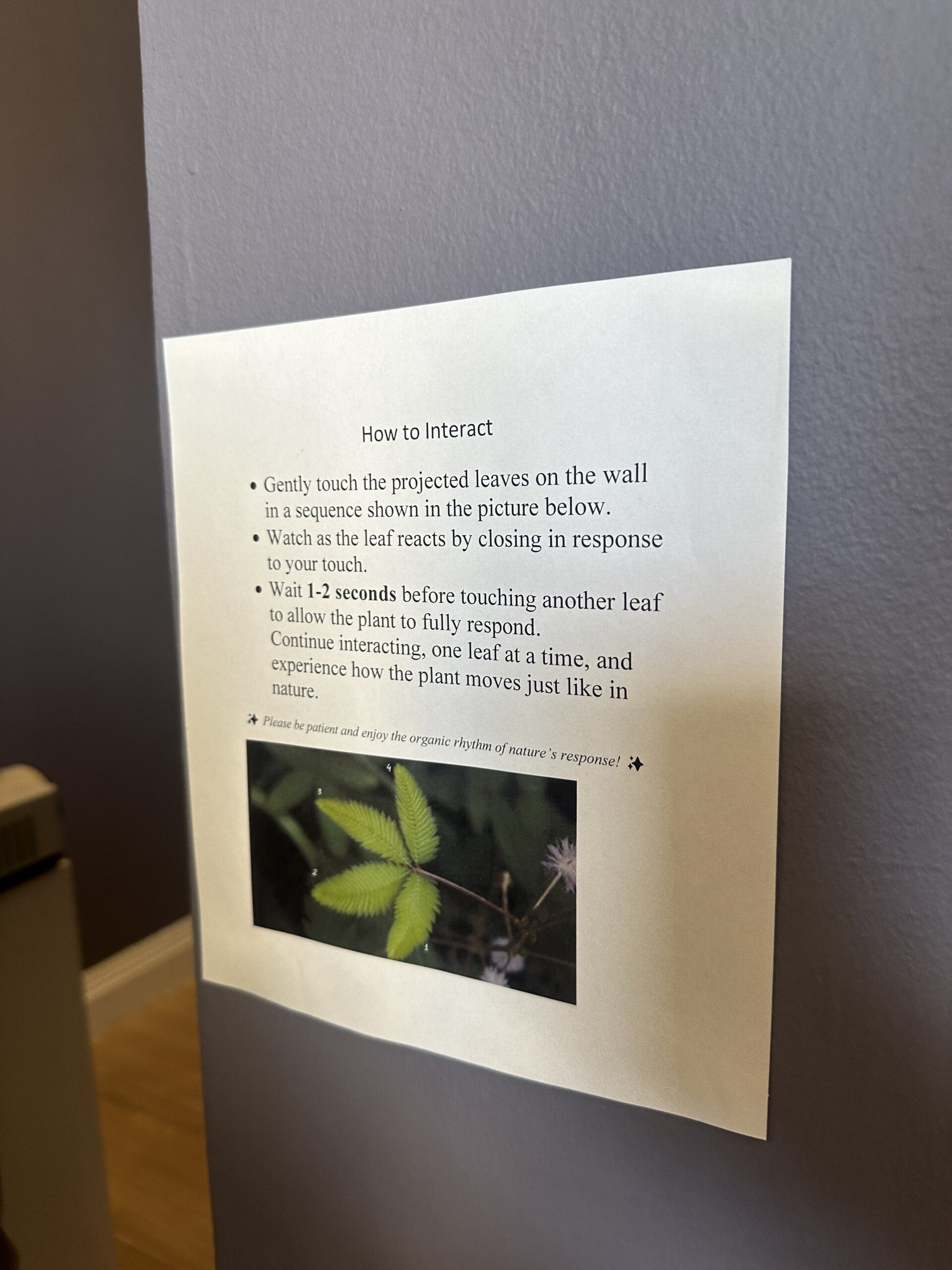
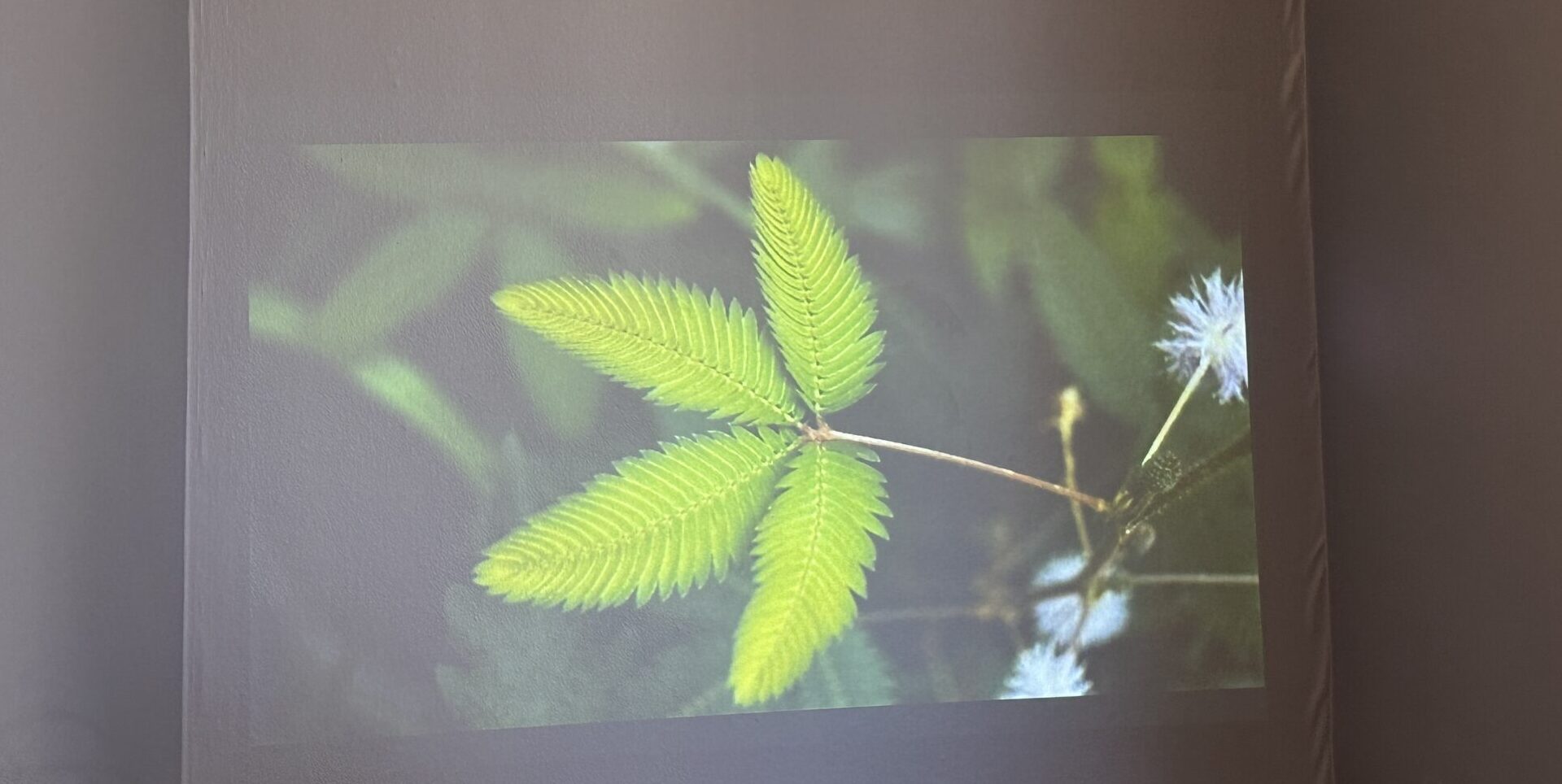
Interactive video:Touch-Responsive Installation
🔍 Relevance to Fluid Curating:
This installation demonstrated how simple, intuitive interactions can create a sense of immersion and engagement—something I aim to integrate into my AI-driven curatorial interfaces.
The delicate balance between control and unpredictability in the piece (the plant reacts in real-time, but only within predetermined parameters) reflects my challenge in Fluid Curating:
-
- How much agency should an audience have in shaping an exhibition?
- Where does the curator’s role shift from author to facilitator?
- Could AI-generated curatorial statements behave like these plants—reacting, adapting, yet following certain structural constraints?
Archival Curation: Layla Knox’s “Rounding Up the Aliens” (2025)
This mixed-media installation reinterpreted Ida Margaret Hayward’s herbarium, a historical collection documenting non-native plant species in the UK.
The artist used vintage textiles, lace, and wool to reconstruct botanical forms, evoking themes of colonial botany, migration, and ecological displacement.
A poem from Hayward’s 1918 scrapbook was displayed, reinforcing the interplay between personal memory, scientific taxonomy, and artistic interpretation.
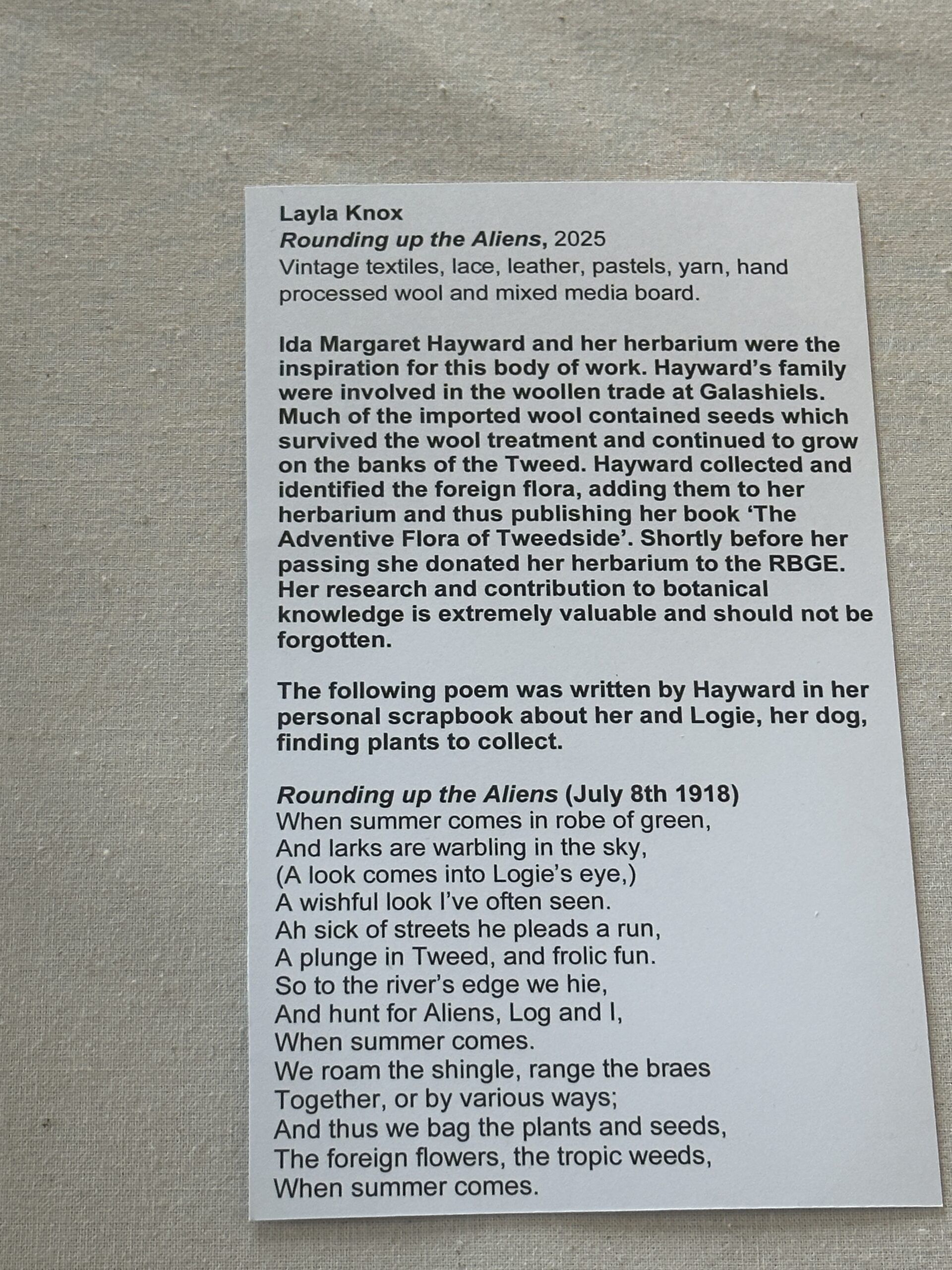
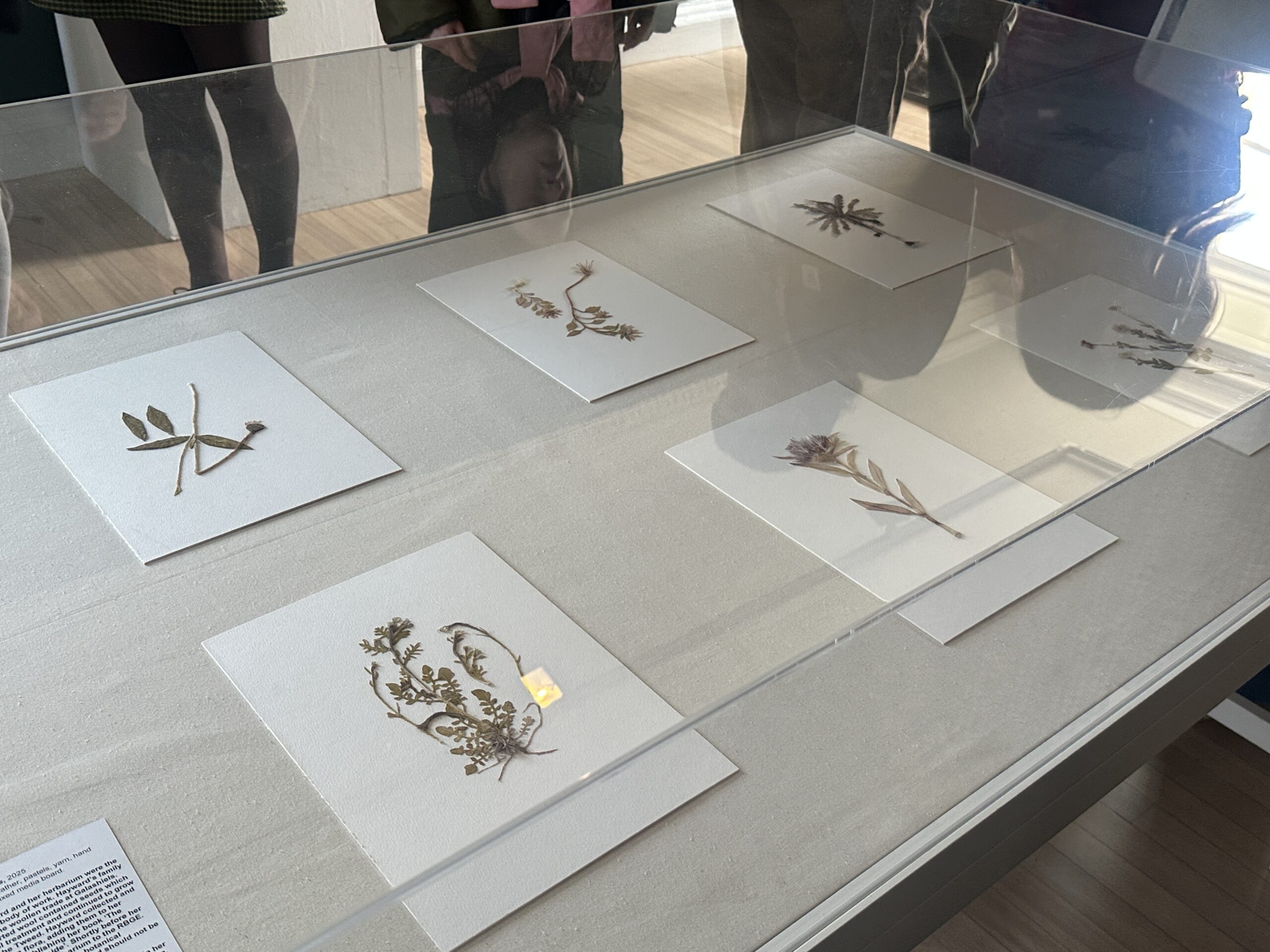
🔍 Relevance to Fluid Curating:
This piece prompted me to reconsider how curatorial practice can function as an evolving archive. Much like how Hayward’s herbarium was continually expanded, my project envisions an exhibition that accumulates audience contributions over time, rather than being fixed.
Additionally, the use of alternative materials to represent botanical specimens aligns with the way I want to explore the intersection of digital and physical archives—how do digital objects (such as NFTs) function as archival markers of artistic practice?
Bridging These Insights with My Curatorial Approach
The exhibition left me reflecting on how natural systems provide a compelling model for digital, decentralized curation. Some key takeaways for my project:
1. The Archive as a Growing Organism
- Hayward’s herbarium was a dynamic archival practice—it documented, categorized, and evolved.
- This is precisely what blockchain technology enables in Fluid Curating: an exhibition that records curatorial decisions over time, allowing for an expanding, decentralized archive.
- I plan to further explore “Living Archives” (Färber, 2007) and how new media artists are using dynamic data-driven archives to rethink preservation and authorship.
2. Intuitive, Tactile Participation in Digital Curating
- The touch-responsive plants in CORPSE FLOWER reminded me that interactivity should feel natural and rewarding.
- Instead of making audience engagement a purely gamified voting process, I want to design AI-curated elements that respond meaningfully to audience actions—perhaps an exhibition layout that shifts in real time based on interaction metrics.
- Exploring Claire Bishop’s (2012) work on participatory art can help clarify the power dynamics at play in audience-driven curation.
3. Temporality as a Curatorial Strategy
- The Corpse Flower’s one-day bloom and the fleeting nature of the exhibition resonated with digital culture—where NFTs, algorithmic art, and blockchain transactions create moments of scarcity and ephemerality.
- How might I introduce time-sensitive elements into my exhibition? Could digital works evolve, decay, or disappear over time based on market trends or audience interactions?
- I plan to research Hito Steyerl’s (2017) writings on the “duty-free art” economy—how digital art exists in flux, between presence and absence.
Next Steps: Integrating These Learnings into Fluid Curating
1. Refining the “Living Archive” Framework
Reviewing case studies of AI-driven curation, particularly in NFT and digital museum settings.
Mapping how blockchain could structure a decentralized exhibition history—should audience votes be permanent, or should the system allow for reversible decisions?
2. Experimenting with Interaction & Participation
Developing an interface that reacts dynamically—perhaps using algorithmic clustering to visualize shifting audience preferences over time.
Researching the balance between curator-led vision and decentralized audience influence.
3. Implementing Temporality & Scarcity into the Exhibition Model
Exploring whether certain exhibition phases could be time-sensitive, requiring participation within specific windows.
Investigating how NFTs could function as time-based contracts, altering their appearance or metadata as the exhibition progresses.
Final Reflections: Curating as an Evolving Ecosystem
Experiencing CORPSE FLOWER reinforced my belief that curating should be an ongoing, adaptive process rather than a static event. The show’s reflection on impermanence, ecological cycles, and audience interaction pushed me to think deeper about how my own exhibition should:
Evolve dynamically over time—shaped by audiences, AI, and external forces.
Encourage intuitive participation—making audience engagement feel organic rather than imposed.
Challenge the limits of authorship—exploring how power, control, and decision-making shift in decentralized curatorial models.
Fluid Curating is becoming clearer in my mind—not just as an exhibition format, but as a way of rethinking how art is displayed, archived, and experienced in an ever-changing digital world. 🌊💡
📚 References & Further Reading
- Bishop, Claire. Artificial Hells: Participatory Art and the Politics of Spectatorship. Verso, 2012.
- Färber, Alexa. Exhibition Experiments. Blackwell, 2007.
- Martinon, Jean-Paul. The Curatorial: A Philosophy of Curating. Bloomsbury, 2013.
- Rugg, Judith & Sedgwick, Michele. Issues in Curating Contemporary Art and Performance. Intellect, 2007.
- Steyerl, Hito. Duty-Free Art: Art in the Age of Planetary Civil War. Verso, 2017.
💬 What do you think about shifting authorship in curation? Should exhibitions be fixed, or fluid? Let’s discuss in the comments! 💭
